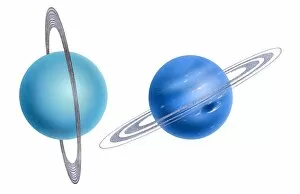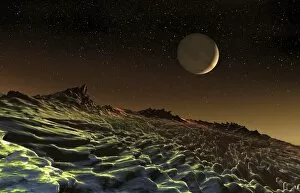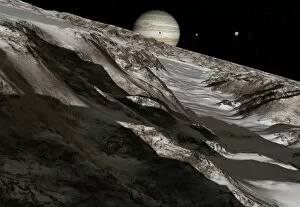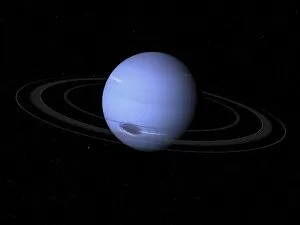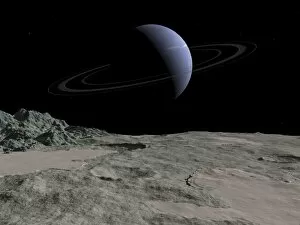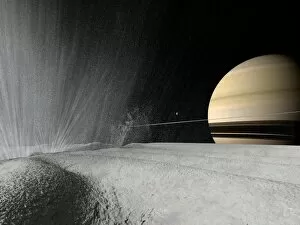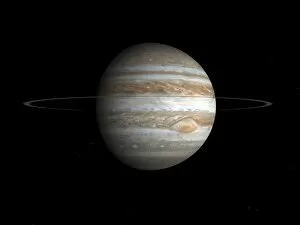Jovian Planet Collection
Jovian planets, also known as gas giants, are a fascinating group of celestial bodies that include Uranus and Neptune
All Professionally Made to Order for Quick Shipping
Jovian planets, also known as gas giants, are a fascinating group of celestial bodies that include Uranus and Neptune. With their majestic presence in our solar system, they captivate us with their unique characteristics and mesmerizing beauty. Artwork C017 / 0781 showcases the ethereal allure of Uranus and Neptune. These distant planets, shrouded in mystery, have an otherworldly charm that is truly captivating. Their vibrant hues and swirling atmospheres make them stand out among the rest. In artwork C017 / 0777, we witness Saturn's grandeur unfold before our eyes. Its iconic rings create a spectacle like no other in the cosmos. This gas giant's magnificent display leaves us in awe of its sheer magnificence. Imagine gazing at a gas giant from one of its moons - it's an experience beyond imagination. The artwork depicting a gas giant seen from its moon transports us to another realm where we can marvel at the immense size and power of these colossal planets. Jupiter takes center stage in the artwork showcasing Ganymede, one of its largest moons. The juxtaposition between Jupiter's massive presence and Ganymede's comparatively smaller size highlights the vastness of these jovian giants. Saturn makes yet another appearance in stunning artwork that captures its enchanting essence perfectly. Its golden glow against the backdrop of space evokes feelings of wonderment as we contemplate this enigmatic planet. Neptune emerges with alluring grace in various artworks throughout this collection. From Neptune alone to Neptune alongside Triton or Earth, each piece reveals different aspects of this distant planet's allure – from its deep blue hue to its mysterious atmosphere. The final artwork portrays Neptune viewed from Triton – a moon orbiting around it. This perspective offers a unique glimpse into Neptune’s majesty as seen by one who resides within its cosmic neighborhood. These captivating images remind us just how extraordinary our universe is while igniting our curiosity about the wonders that lie beyond.

